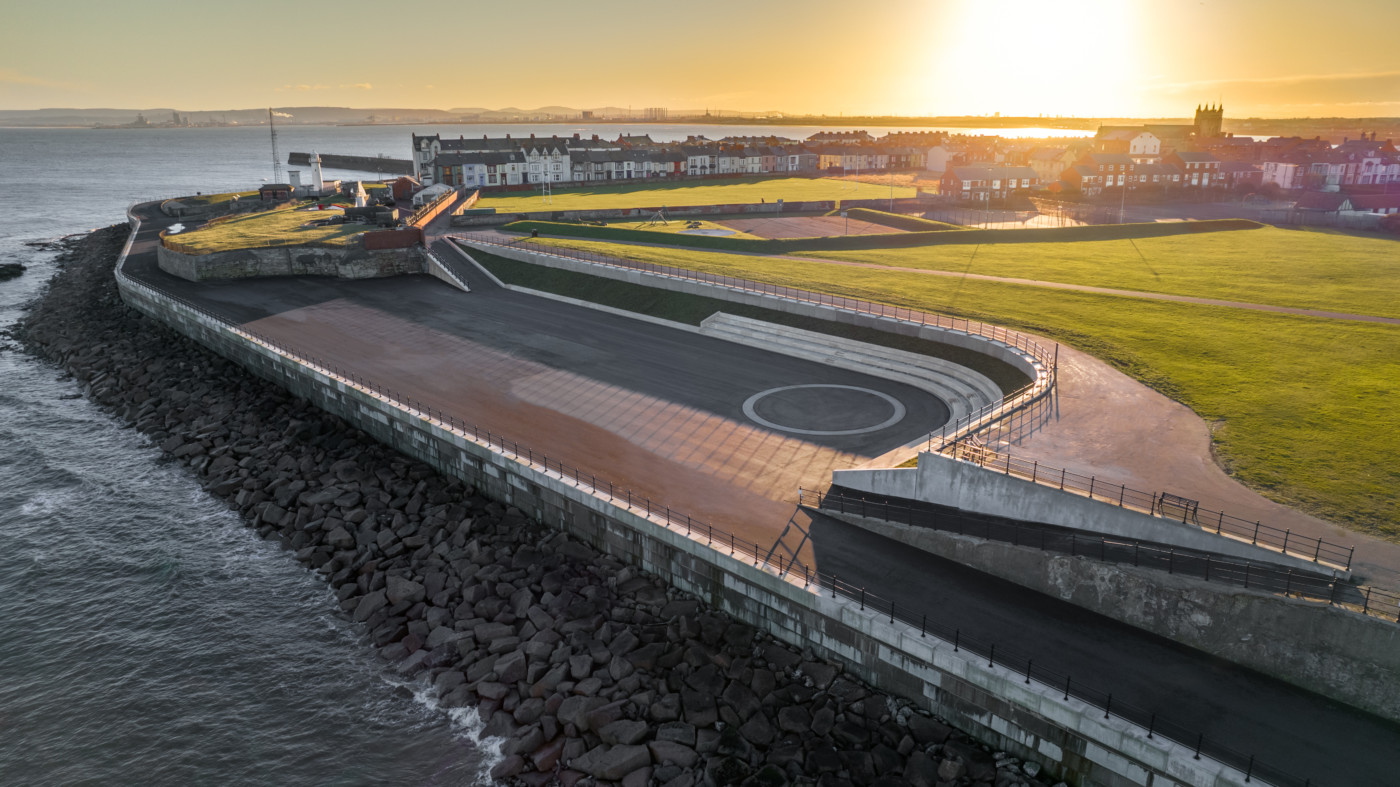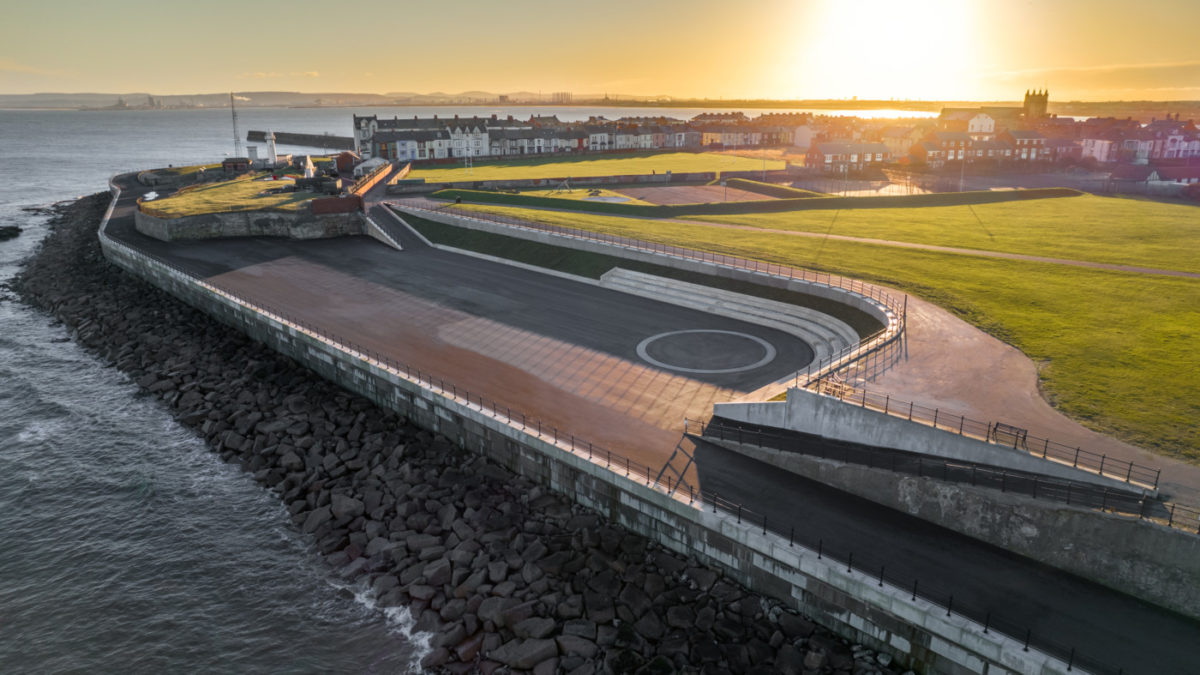The site itself sits with the Headland Conservation Area and adjacent to a Scheduled Ancient Monument and a Site of Special Scientific Interest. The design team went to great lengths to delve into the history of the site to ensure that the overall form, design and material palette was in keeping with the history of the site and its current conservation status.
The project incorporates amphitheatre style seating focussing upon the performance area in the north of the site. The wider area is punctuated with wildflower and sea thrift turf to soften the coastal landscape.
The site was formerly a much loved venue which provided immeasurable value to the local community. By investing in the space, even when it isn’t animated, provides a much needed social space for residents and visitors. It is hoped that through the successful delivery of this project that a regenerative impact is felt within the wider area as the community restores its pride in the space. Almost immediately, footfall has increased and antisocial behaviour and general litter have greatly decreased, demonstrating that the space has been adopted by the community.
Three Winning Facts:
- The name Elephant Rock pays homage to a rock formation in the shape of an elephant that dominated the foreshore until the great storm of 1891 washed it away. Even over a century later, this local landmark is fondly remembered and so the name of the events space helps this legacy live on.
- Unique nature of the scheme makes it feel intimate for small groups and is expandable for large music events. What other venue can offer surroundings that feel as good for 3 people as it does for 3000?
- The internationally designated foreshore adjacent to this site is home to some of the rarest birds in Europe. In order to prevent any disturbance to these birds over winter, the programme was condensed by 3 months by utilising off site manufacturing. This allowed the base units to be manufactured off site during this period allowing site work to commence in the spring. This methodology allowed for the scheme to finish ahead of the original completion date and was only possible through extensive supply chain collaboration.


